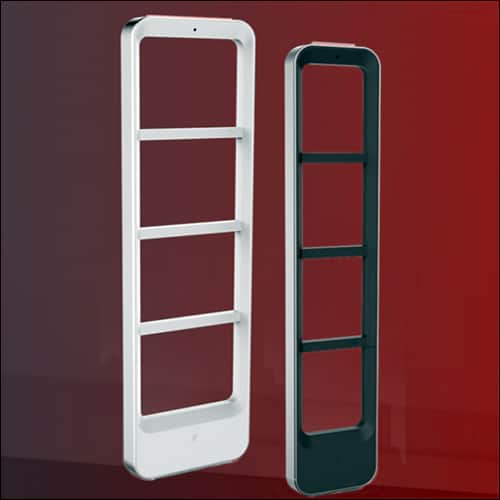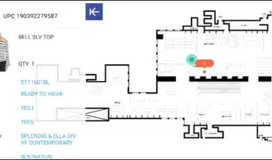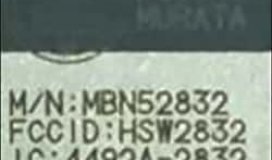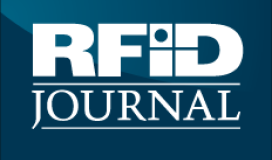As brick-and-mortar stores compete with online shopping trends, they are becoming more creative in building open, inviting entrances with eye-catching merchandise to capture the interest of passing shoppers. But that design poses challenges for electronic article surveillance (EAS) and radio frequency identification (RFID), which are designed to protect stores from shrinkage, as well as track inventory.
Retail loss-prevention and merchandise-visibility technology company Checkpoint Systems has released two new products that it says will provide improved EAS functionality. The new offerings employ UHF RFID tag reads to help retailers manage inventory and shrinkage, while accommodating attractive, wide-open entrances.
The NEO, Checkpoint's new EAS antenna platform, is designed to provide better detection of RFID tags and is commercially available now, the company reports. The UF-1 is what the firm calls the first RFID solution deployed under a store's floor; the antenna is presently undergoing piloting at retail locations throughout the world.
The two solutions are designed to meet the needs of retailers looking to offer wide entrances. Many stores want an open, inviting entrance with plenty of space for movement—in some case, entry points as much as 18 to 20 feet wide, which is too wide for many standard RFID reader antennas to reliably interrogate tags.

Additionally, as a way to compete against online sales, brick-and-mortar stores are also trending toward placing attractive products near entrances to draw in consumer traffic and hopefully make subsequent purchases. This model raises challenges when it comes to EAS and ensuring that unpurchased goods are protected from leaving the premises, yet still enabling them to be displayed near the doorway without setting off an alert unless they are actually moving through that exit.
"Our customers had been asking for a high-performance point-of-exit system that could be concealed," says Carl Rysdon, Checkpoint Systems' VP of inventory-control solutions. That meant something that could not only be sensitive and accommodate wide doorways, but would be only minimally visible. The NEO solution that resulted is aimed at high-end retailers seeking attractive entrances.
The NEO platform—built into Checkpoint's latest antennas—offers what the company calls a 35 percent increase in read range over predecessor RFID reader antennas, Rysdon says, so that retailers can increase the distance between each antenna to nearly 9 feet. Additionally, because of the readers' improved sensitivity, NEO solution users can expect to read even the small labels attached to goods at a high risk for theft, such as cosmetics products, either with the current aisle width setup or wider. During early testing, he recalls, the NEO-based antennas proved to have a 50 percent better detection rate of small tags, such as those on cosmetics, compared to standard RFID antennas.
The NEO platform includes Bluetooth connectivity to the reader, and between the reader and antenna, so that technicians can easily access the system wirelessly while in the store. The first antennas to leverage the NEO technology are Checkpoint's new NP10 and NP20 sensors, the next generation of the company's P10 and P20 devices. Developed for grocery stores and big-box retailers, they feature a less intrusive, lightweight, more contemporary look, the firm explains, and can be positioned up to 8.5 feet from each other. Therefore, in a wide entrance, one reader antenna could be installed in a pedestal in the center, or two antennas could face each other on either side of the entrance.
The under-floor UF-1 is designed to provide aesthetically pleasing RFID tracking at the point of exit. Stores typically cut into the floor and install antennas where they expect to read tags through the floor tiles. Because the reader antennas are under the floor instead of suspended from a ceiling, they are situated closer to the tags as they move through a doorway (approximately 3 feet in distance, for instance). Ceiling-mounted antennas, on the other hand, can be suspended above the floor by as much as 12 feet, and are thus located 6 to 10 feet from RFID-tagged products moving through the space.
The UF-1 uses Checkpoint's Wirama Radar software, which calculates whether a tag is simply on display near a doorway or is passing through the door. It can also determine the direction in which a tag passes over an antenna.



